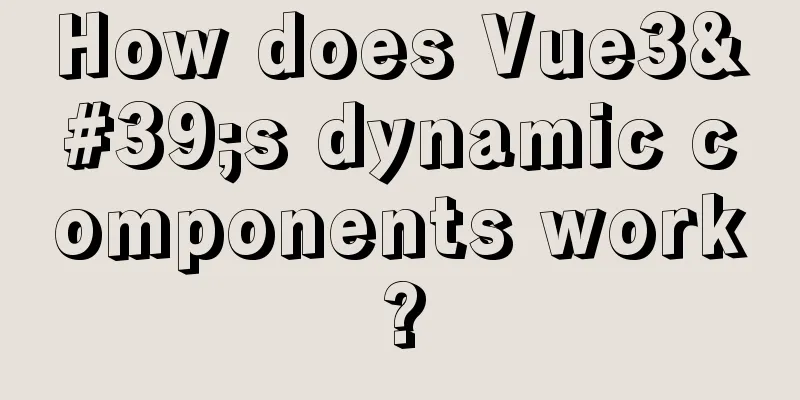JavaScript canvas Tetris game

|
Tetris is a very classic little game, and I also tried to write it. But I want to implement it with code that is as concise and logical as possible. There is no need for too much code to record the model of the falling blocks, or to record the x and y of each falling block. I thought about the following ideas, and then found that it is very concise to write like this. There are 7 basic models of Tetris:
There are many ways to record these models, such as recording their relative positions, recording the x, y coordinates of each block, etc. I came up with an idea to record these 7 models. It is very concise and easy to use when writing left shift, right shift and rotation functions. The following array records these models. var cubeArr=[[6,7,12,13],[7,8,11,12],[6,7,11,12],[7,12,17,8],[7,12,16,17],[7,12,17,22],[7,11,12,13]]; Ideas:A 5*5 table, numbered starting from 0. The point numbered 12 is the center point. Each model is recorded with its label, for example, the first model is [6,7,12,13]. Taking the upper left corner of the table as the reference point, there is such a rule: assuming that the number in the table is value, the remainder of value divided by 5 is the x offset of the point relative to the reference point, and the integer part of value divided by 5 is the y offset of the point relative to the reference point. It is also very simple to rotate. By rotating around the center 12, you can also find some patterns. var movex=cubeNow[i]%5; var movey=Math.floor(cubeNow[i]/5); Draw a model with a loop
function drawEle(color)
{
ctx.fillStyle=color;
ctx.strokeStyle='#fff';
for(var i=0;i<4;i++)
{
var movex=downInfor.cubeNow[i]%5;
var movey=Math.floor(downInfor.cubeNow[i]/5);
ctx.fillRect(cubeW*(downInfor.point[0]+movex),cubeW*(downInfor.point[1]+movey),cubeW,cubeW);
ctx.strokeRect(cubeW*(downInfor.point[0]+movex),cubeW*(downInfor.point[1]+movey),cubeW,cubeW)
}
}
Rotate the model: The relationship between the current position and the next rotation position can be easily realized through this array to rotate the model. For example, if the position is numbered 0 and we rotate clockwise, the next position is 4. The position numbered 6, the next position is 8. The following array can find the next position from the previous position. var rotateArr=[4,9,14,19,24,3,8,13,18,23,2,7,12,17,22,1,6,11,16,21,0,5,10,15,20]; Code:
<!DOCTYPE html>
<html lang="en">
<head>
<meta charset="UTF-8">
<title>Tetris</title>
</head>
<body>
<div>
<div style="display:inline-block">
<canvas id="can" height="480" width="300" style="border:3px solid black;"></canvas>
</div>
<div id="info" style="display:inline-block;height:600px;vertical-align: top;font-family: tmb; font-size:14pt; color:green;">
<span>Score:</span><span id="score">0</span>
</div>
</div>
<script type="text/javascript">
var cubeW=20;
var cubeArr=[[6,7,12,13],[7,8,11,12],[6,7,11,12],[7,12,17,8],[7,12,16,17],[7,12,17,22],[7,11,12,13]];
var colorArr=['#ffc0cb','#dda0dd','#9370db','#6495ed','#fa8072','#ff8c00','#008000'];
var rotateArr=[4,9,14,19,24,3,8,13,18,23,2,7,12,17,22,1,6,11,16,21,0,5,10,15,20];
var canvas = document.getElementById('can');
var ctx = canvas.getContext('2d');
var score = document.getElementById('score');
var canWidth=canvas.width;
var canHeight=canvas.height;
var downInfor={}, staticCube=[];
var myinter;
window.initialize = function() //initialize {
drawline();
for(var i=0;i<(canWidth/cubeW);i++)
{
staticCube[i]=[];
for(var j=0;j<(canHeight/cubeW);j++)
{
staticCube[i][j]=0;
}
}
initCube();
myinter=setInterval('movedown()',200); //The first parameter should be quoted}
function drawline()
{
ctx.lineWidth=1;
ctx.strokeStyle='#ddd';
for(var i=0;i<(canWidth/cubeW);i++)
{
ctx.moveTo(cubeW*i,0);
ctx.lineTo(cubeW*i,canHeight);
}
ctx.stroke();
for(var j=0;j<(canHeight/cubeW);j++)
{
ctx.moveTo(0,cubeW*j);
ctx.lineTo(canHeight,cubeW*j);
}
ctx.stroke();
}
function initCube()
{
var index=Math.floor(Math.random()*cubeArr.length);//randomly generate downInfor.cubeNow=cubeArr[index].concat();
downInfor.index=index;
downInfor.prepoint=[5,-1];
downInfor.point=[5,-1];
drawEle(colorArr[downInfor.index]);
}
function movedown()
{
//Judge whether the next position is reasonablevar length,isempty=true,px,py,movex,movey,max=0;
for(var i=0;i<4;i++)
{
if(max<downInfor.cubeNow[i])
max=downInfor.cubeNow[i];
}
length=Math.ceil(max/5);
for(var i=0;i<4;i++)
{
px=downInfor.point[0]+downInfor.cubeNow[i]%5;
py=downInfor.point[1]+1+Math.floor(downInfor.cubeNow[i]/5);
if(staticCube[px][py]==1)
{
isempty=false;
break;
}
}
if((downInfor.point[1]+length)<(canHeight/cubeW)&&isempty)
{
downInfor.prepoint=downInfor.point.concat(); //Note the reference type downInfor.point[1]=downInfor.point[1]+1;
clearEle();
drawEle(colorArr[downInfor.index]);
}
else //When unable to move {
for(var i=0;i<4;i++)
{
px=downInfor.point[0]+downInfor.cubeNow[i]%5;
py=downInfor.point[1]+Math.floor(downInfor.cubeNow[i]/5);
staticCube[px][py]=1;
}
drawEle('#555');
checkfullLine();
}
}
function moveLeft()
{
var leftroom=4,isempty=true,px,py,movex,movey;
for(var i=0;i<4;i++)
{
px=downInfor.point[0]-1+downInfor.cubeNow[i]%5;
py=downInfor.point[1]+Math.floor(downInfor.cubeNow[i]/5);
if((downInfor.cubeNow[i]%5)<leftroom)
leftroom=downInfor.cubeNow[i]%5;
if(staticCube[px][py]==1)
{
isempty=false;
break;
}
}
if((downInfor.point[0]+leftroom)>=0&&isempty)
{
downInfor.prepoint=downInfor.point.concat();
downInfor.point[0]=downInfor.point[0]-1;
clearEle();
drawEle(colorArr[downInfor.index]);
}
}
function moveRight()
{
var rightroom=0,isempty=true,px,py,movex,movey;
for(var i=0;i<4;i++)
{
px=downInfor.point[0]+1+downInfor.cubeNow[i]%5;
py=downInfor.point[1]+Math.floor(downInfor.cubeNow[i]/5);
if((downInfor.cubeNow[i]%5)>rightroom)
rightroom=downInfor.cubeNow[i]%5;
if(staticCube[px][py]==1)
{
isempty=false;
break;
}
}
if((downInfor.point[0]+rightroom+1)<(canWidth/cubeW)&&isempty)
{
downInfor.prepoint=downInfor.point.concat();
downInfor.point[0]=downInfor.point[0]+1;
clearEle();
drawEle(colorArr[downInfor.index]);
}
}
function moverotate()//process rotation {
var isempty=true,px,py,movex,movey, tempRotate=[0,0,0,0];
for(var i=0;i<4;i++)
{
tempRotate[i]=rotateArr[downInfor.cubeNow[i]];
}
for(var i=0;i<4;i++)
{
px=downInfor.point[0]+tempRotate[i]%3;
py=downInfor.point[1]+Math.floor(tempRotate[i]/3);
if(staticCube[px][py]==1)
{
isempty=false;
break;
}
}
if(isempty)
{
downInfor.prepoint=downInfor.point.concat();
clearEle();
downInfor.cubeNow=tempRotate.concat();
drawEle(colorArr[downInfor.index]);
}
}
function drawEle(color)
{
ctx.fillStyle=color;
ctx.strokeStyle='#fff';
for(var i=0;i<4;i++)
{
var movex=downInfor.cubeNow[i]%5;
var movey=Math.floor(downInfor.cubeNow[i]/5);
ctx.fillRect(cubeW*(downInfor.point[0]+movex),cubeW*(downInfor.point[1]+movey),cubeW,cubeW);
ctx.strokeRect(cubeW*(downInfor.point[0]+movex),cubeW*(downInfor.point[1]+movey),cubeW,cubeW)
}
}
function clearEle()
{
ctx.lineWidth=1;
ctx.strokeStyle='#ddd';
for(var i=0;i<4;i++)
{
var movex=downInfor.cubeNow[i]%5;
var movey=Math.floor(downInfor.cubeNow[i]/5);
ctx.clearRect(cubeW*(downInfor.prepoint[0]+movex),cubeW*(downInfor.prepoint[1]+movey),cubeW,cubeW);
ctx.strokeRect(cubeW*(downInfor.prepoint[0]+movex),cubeW*(downInfor.prepoint[1]+movey),cubeW,cubeW)
}
}
function checkfullLine()//Check if there is a full line {
var isFullLine=true,index=0,changeScore=false;
for(var i=0;i<canWidth/cubeW;i++)
{
if(staticCube[i][0]==1)
{
alert('Game over!');
clearInterval(myinterval);
return;
}
}
for(var i=canHeight/cubeW-1;i>=0;i--)
{
isFullLine=true;
for(var j=0;j<(canWidth/cubeW);j++)
{
if(staticCube[j][i]==0)
{
isFullLine=false;
}
}
if(isFullLine)//Add one point {
score.innerHTML=parseInt(score.innerText)+1;
changeScore=true;
for(var s=i;s>=0;s--) {
for (var j = 0; j < (canWidth / cubeW); j++) {
(s- 1) >= 0 ? staticCube[j][s] = staticCube[j][s - 1] : staticCube[j][s] = 0;
}
}
}
}
if(changeScore)
{
ctx.clearRect(0,0,canWidth,canHeight);
drawline();
ctx.fillStyle='555';
ctx.strokeStyle='#fff';
for(var i=0;i<(canWidth/cubeW);i++)
{
for(var j=0;j<(canHeight/cubeW);j++)
{
if(staticCube[i][j]==1)
{
ctx.fillRect(cubeW*i,cubeW*j,cubeW,cubeW);
ctx.strokeRect(cubeW*i,cubeW*j,cubeW,cubeW);
}
}
}
}
initCube();
}
window.onkeydown=function (evt)
{
switch(evt.keyCode)
{
case 37: //leftmoveLeft();
break;
case 38: //moverotate();
break;
case 39: //right moveRight();
break;
case 40: //movedown();
break;
}
}
</script>
</body>
</html>Effect:
The above is the full content of this article. I hope it will be helpful for everyone’s study. I also hope that everyone will support 123WORDPRESS.COM. You may also be interested in:
|
<<: Implementation steps for building a MySQL master-slave replication environment based on Docker
>>: Detailed steps to upgrade mysql8.0.11 to mysql8.0.17 under win2008
Recommend
How to configure the OpenWRT development environment on Ubuntu 18.04 (physical machine)
1. Install a virtual machine (physical machine) Y...
Detailed explanation of the steps to create a web server with node.js
Preface It is very simple to create a server in n...
JavaScript implements double-ended queue
This article example shares the specific code of ...
Linux gzip command compression file implementation principle and code examples
gzip is a command often used in Linux systems to ...
calc() to achieve full screen background fixed width content
Over the past few years, there has been a trend i...
Native js to implement a simple calculator
This article example shares the specific code of ...
Implementation of Docker deployment of ElasticSearch and ElasticSearch-Head
This article mainly explains how to deploy Elasti...
Detailed explanation of Nest.js environment variable configuration and serialization
A brief description of environment variable confi...
MySQL triggers: creating multiple triggers operation example analysis
This article uses an example to describe the crea...
Use of kubernetes YAML files
Table of contents 01 Introduction to YAML files Y...
JavaScript+HTML to implement student information management system
Table of contents 1. Introduction 2. Rendering 3....
More than 300 lines of CSS code to achieve the explosive special effects of WeChat 8.0
A major feature of the WeChat 8.0 update is the s...
js code to realize multi-person chat room
This article example shares the specific code of ...
Details of the order in which MySQL reads my.cnf
Table of contents The order in which MySQL reads ...
mysql5.6.zip format compressed version installation graphic tutorial
Preface: MySQL is a relational database managemen...












